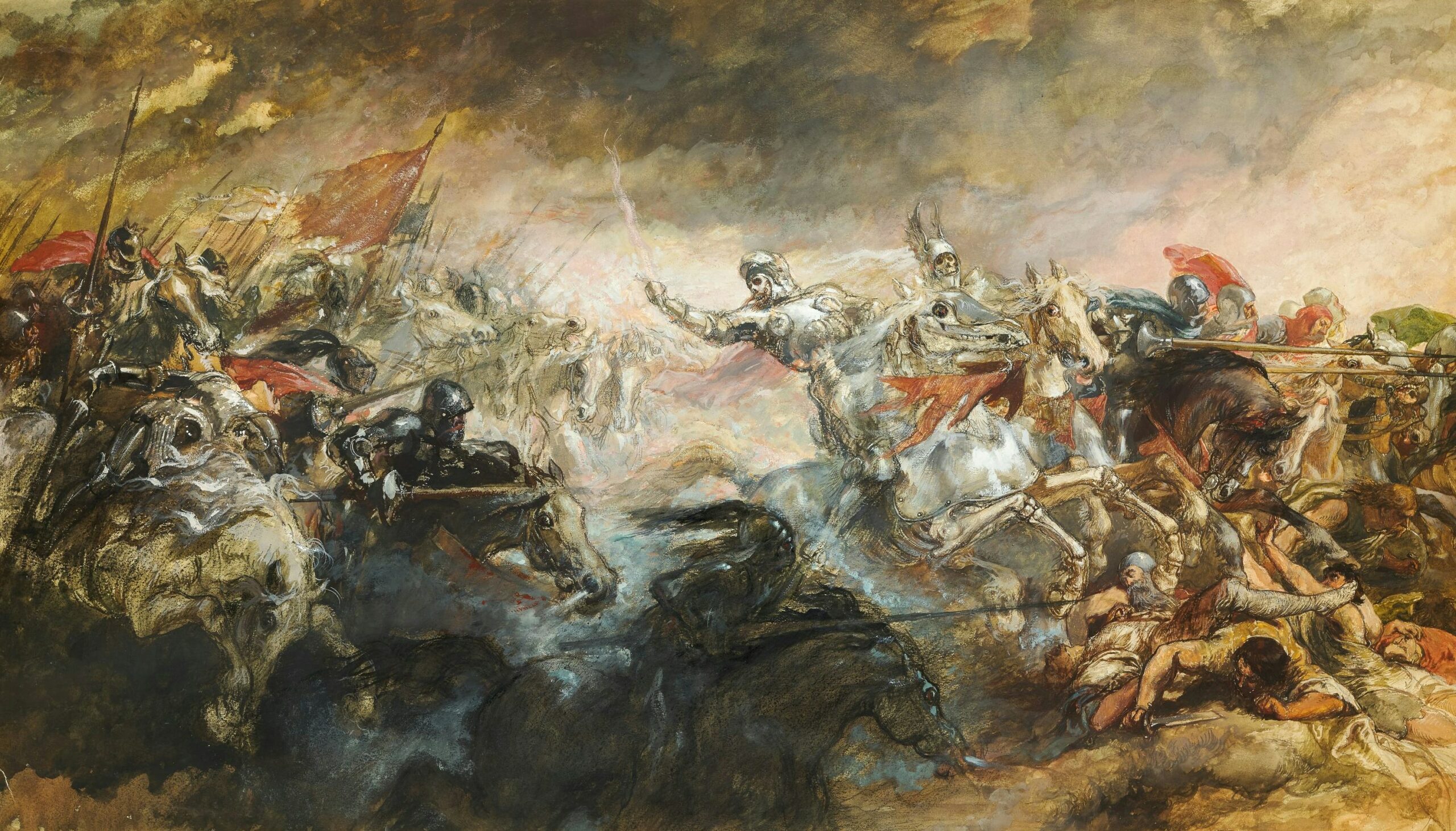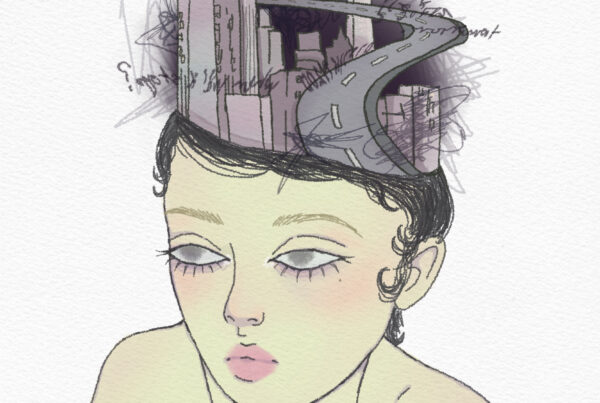
When reading the news it shocks me to see the amount of violence that is going on in this world. Everyday people suffer from discrimination, oppression, and war. To reduce the aforementioned atrocities, 192 out of 195 countries agreed to the universal declaration of human rights, which aimed to establish peace and equality all around the world (Freeman, 2022). Although most of us know that these acts violate human rights they are still being committed everyday. The question is: how? How do people willingly hurt each other even though they know that these acts are legally and morally wrong? Today, we take a look at social-psychological processes that override morals and values.
When reading the news it shocks me to see the amount of violence that is going on in this world. Everyday people suffer from discrimination, oppression, and war. To reduce the aforementioned atrocities, 192 out of 195 countries agreed to the universal declaration of human rights, which aimed to establish peace and equality all around the world (Freeman, 2022). Although most of us know that these acts violate human rights they are still being committed everyday. The question is: how? How do people willingly hurt each other even though they know that these acts are legally and morally wrong? Today, we take a look at social-psychological processes that override morals and values.

Photo by Birmingham Museums Trust on Unsplash

Photo by Birmingham Museums Trust on Unsplash
A key reason why people morally disengage is dehumanisation (Bandura et al., 1996), which refers to the idea that some people are perceived as less human than others (Vaes et al., 2012). Thereby acts of violence to these “non-humans” are justified as social norms no longer apply to them. Dehumanisation is enforced mainly on individuals who do not belong to our religion, sexuality, ethnicity or nationality. They are outgroups and oftentimes minorities, meaning that people feel less connected to them and cannot relate to their lives and suffering (Leyens et al., 2000). But not every outgroup is directly physically attacked – there are different layers to dehumanisation, which can be depicted with the Pyramid of Hate (Redden, 2021).
According to the Pyramid of Hate, there are five stages before violence escalates and how dehumanisation processes become increasingly more intense. The levels build up on each other and are all linked to specific behaviour:
- Biassed Attitudes
- Acts of Bias
- Discrimination
- Bias Motivated Violence
- Genocide
To see how this process may unfold and escalate, let’s consider a hypothetical example. The community of Spectrans represents a minority in the country of Veridica. Spectrans are characterised by their distinct physical appearance, namely their pigmentation ranging across a spectrum of colours. It sets them apart from the dominant population, the Normals.
It all begins with seemingly ‘harmless’ attitudes of the Normals towards the Spectrans. There is a common stereotype that all Spectrans are generally less intelligent than the Normals. For instance, if a Spectran university professor is giving a lecture and makes a mistake most students would jump to conclusions easily and question their competence (Brown & Smith, 1989; Ho et al., 2009). Furthermore, right leaning Newspapers use non-inclusive language calling Spectrans “Wacktrans” and spreading further misinformation about them. One of which is that a group of influential Spectrans, who own the biggest railway company in Veridica, were responsible for a train accident. These newspapers were quick to accuse them of having plotted it (Waxman, 2023).
After these biassed attitudes have become established within the population of Veridica, the next stage of the pyramid of hate is reached: acts of bias. The aforementioned Spectran professor is openly insulted during their lectures without any repercussions for the assaulting students. Most of the other faculty members do not stand up for the Spectran and further exclude them from work-related social events (O’Reilly & Banki, 2016). This behaviour is not only found within university, but also among younger pupils. Spectran children and adolescents are bullied in highschool for their heritage and are often the target of discriminatory jokes (Douglass, 2016).
The social climate for Spectrans in Veridica becomes increasingly tense as biases and prejudice are established. Policies start to enforce discrimination. This includes laws that forbid Spectrans to be in managing positions within official institutions. The Spectran professor has been fired from his job and struggles to find a new one as his heritage often prevents him from even getting invited to an interview (Kang et al., 2016). This deteriorates his financial stability, excluding him further from participating in society (Doolaard et al., 2021).
“Thereby acts of violence to these “non-humans” are justified as social norms no longer apply to them.”
As law and society basically justify discrimination against Spectrans, there is no longer any protection against acts of violence. The Normals do not see any point in perceiving the Spectrans as worthy. At this stage dehumanisation becomes extreme. Spectrans are openly attacked on the street. Rape, vandalism of Spectran businesses, and even murder become common. Every Spectran knows someone who has been killed or had to go to prison for no apparent reason. It is no longer safe for Spectrans and many consider leaving Veridica.
The last step of dehumanization is genocide. Spectranss lives are perceived as unworthy according to the Normals. The majority overrules the minority entirely and tries to diminish their existence entirely. This leads to systematic and deliberate murder of the Spectran population. The official forces of Veridica arrest Spectrans arbitrarily and the general public does not object (Newbury, 1998).
Although the community of Spectrans and the actions they experience are entirely fictional they are analogous to injustice that is happening daily across the world. The literature behind the examples are based on factual actions that happened against ethnical, religious, or political minorities. When looking at the development of the aggression against these groups we are not only reminded how inequality of power and hate lead to horrific acts, but also that these acts often start with light prejudice and microaggression. To prevent escalation it is important to tackle these roots of discrimination and be honest with ourselves with every tiny action we do. When do you begin to neglect your morals? <<
References
– Bandura, A., Barbaranelli, C., Caprara, G. V., & Pastorelli, C. (1996). Mechanisms of moral disengagement in the exercise of moral agency. Journal of Personality and Social Psychology, 71(2), 364.
– Brown, R., & Smith, A. (1989). Perceptions of and by minority groups: The case of women in academia. European Journal of Social Psychology, 19(1), 61-75.
– Doolaard, F. T., Lelieveld, G. J., Noordewier, M. K., Van Beest, I., Gallucci, M., Van Dijk, E., & Van Dijk, W. W. (2021). The mutually reinforcing effects of experienced financial scarcity and feelings of social exclusion. Manuscript submitted for publication.
– Douglass, S., Mirpuri, S., English, D., & Yip, T. (2016). “They were just making jokes”: Ethnic/racial teasing and discrimination among adolescents. Cultural Diversity and Ethnic Minority Psychology, 22(1), 69.
– Freeman, M. (2022). Human rights. John Wiley & Sons.
– Ho, A. K., Thomsen, L., & Sidanius, J. (2009). Perceived academic competence and overall job evaluations: Students’ evaluations of African American and European American professors. Journal of Applied Social Psychology, 39(2), 389-406.
– Kang, S. K., DeCelles, K. A., Tilcsik, A., & Jun, S. (2016). Whitened résumés: Race and self-presentation in the labor market. Administrative science quarterly, 61(3), 469-502.
– Leyens, J. P., Paladino, P. M., Rodriguez-Torres, R., Vaes, J., Demoulin, S., Rodriguez-Perez, A., & Gaunt, R. (2000). The emotional side of prejudice: The attribution of secondary emotions to ingroups and outgroups. Personality and Social Psychology Review, 4(2), 186-197.
– Newbury, D. (1998). Understanding genocide. African Studies Review, 41(1), 73-97.
– O’Reilly, J., & Banki, S. (2016). Research in work and organizational psychology: Social exclusion in the workplace. Social exclusion: Psychological approaches to understanding and reducing its impact, 133-155.
– Redden, T. (2021). The Pyramid of Hate.
– Vaes, J., Leyens, J. P., Paola Paladino, M., & Pires Miranda, M. (2012). We are human, they are not: Driving forces behind outgroup dehumanisation and the humanisation of the ingroup. European Review of Social Psychology, 23(1), 64-106.
– Waxman, O. B. (2023, September 13). The History of Antisemitic Conspiracy Theories, from the Rothschilds to George Soros. TIME. https://time.com/6311698/antisemitism-conspiracy-theories-rothschild/
A key reason why people morally disengage is dehumanisation (Bandura et al., 1996), which refers to the idea that some people are perceived as less human than others (Vaes et al., 2012). Thereby acts of violence to these “non-humans” are justified as social norms no longer apply to them. Dehumanisation is enforced mainly on individuals who do not belong to our religion, sexuality, ethnicity or nationality. They are outgroups and oftentimes minorities, meaning that people feel less connected to them and cannot relate to their lives and suffering (Leyens et al., 2000). But not every outgroup is directly physically attacked – there are different layers to dehumanisation, which can be depicted with the Pyramid of Hate (Redden, 2021).
According to the Pyramid of Hate, there are five stages before violence escalates and how dehumanisation processes become increasingly more intense. The levels build up on each other and are all linked to specific behaviour:
- Biassed Attitudes
- Acts of Bias
- Discrimination
- Bias Motivated Violence
- Genocide
To see how this process may unfold and escalate, let’s consider a hypothetical example. The community of Spectrans represents a minority in the country of Veridica. Spectrans are characterised by their distinct physical appearance, namely their pigmentation ranging across a spectrum of colours. It sets them apart from the dominant population, the Normals.
It all begins with seemingly ‘harmless’ attitudes of the Normals towards the Spectrans. There is a common stereotype that all Spectrans are generally less intelligent than the Normals. For instance, if a Spectran university professor is giving a lecture and makes a mistake most students would jump to conclusions easily and question their competence (Brown & Smith, 1989; Ho et al., 2009). Furthermore, right leaning Newspapers use non-inclusive language calling Spectrans “Wacktrans” and spreading further misinformation about them. One of which is that a group of influential Spectrans, who own the biggest railway company in Veridica, were responsible for a train accident. These newspapers were quick to accuse them of having plotted it (Waxman, 2023).
After these biassed attitudes have become established within the population of Veridica, the next stage of the pyramid of hate is reached: acts of bias. The aforementioned Spectran professor is openly insulted during their lectures without any repercussions for the assaulting students. Most of the other faculty members do not stand up for the Spectran and further exclude them from work-related social events (O’Reilly & Banki, 2016). This behaviour is not only found within university, but also among younger pupils. Spectran children and adolescents are bullied in highschool for their heritage and are often the target of discriminatory jokes (Douglass, 2016).
The social climate for Spectrans in Veridica becomes increasingly tense as biases and prejudice are established. Policies start to enforce discrimination. This includes laws that forbid Spectrans to be in managing positions within official institutions. The Spectran professor has been fired from his job and struggles to find a new one as his heritage often prevents him from even getting invited to an interview (Kang et al., 2016). This deteriorates his financial stability, excluding him further from participating in society (Doolaard et al., 2021).
“Thereby acts of violence to these “non-humans” are justified as social norms no longer apply to them.”
As law and society basically justify discrimination against Spectrans, there is no longer any protection against acts of violence. The Normals do not see any point in perceiving the Spectrans as worthy. At this stage dehumanisation becomes extreme. Spectrans are openly attacked on the street. Rape, vandalism of Spectran businesses, and even murder become common. Every Spectran knows someone who has been killed or had to go to prison for no apparent reason. It is no longer safe for Spectrans and many consider leaving Veridica.
The last step of dehumanization is genocide. Spectranss lives are perceived as unworthy according to the Normals. The majority overrules the minority entirely and tries to diminish their existence entirely. This leads to systematic and deliberate murder of the Spectran population. The official forces of Veridica arrest Spectrans arbitrarily and the general public does not object (Newbury, 1998).
Although the community of Spectrans and the actions they experience are entirely fictional they are analogous to injustice that is happening daily across the world. The literature behind the examples are based on factual actions that happened against ethnical, religious, or political minorities. When looking at the development of the aggression against these groups we are not only reminded how inequality of power and hate lead to horrific acts, but also that these acts often start with light prejudice and microaggression. To prevent escalation it is important to tackle these roots of discrimination and be honest with ourselves with every tiny action we do. When do you begin to neglect your morals? <<



